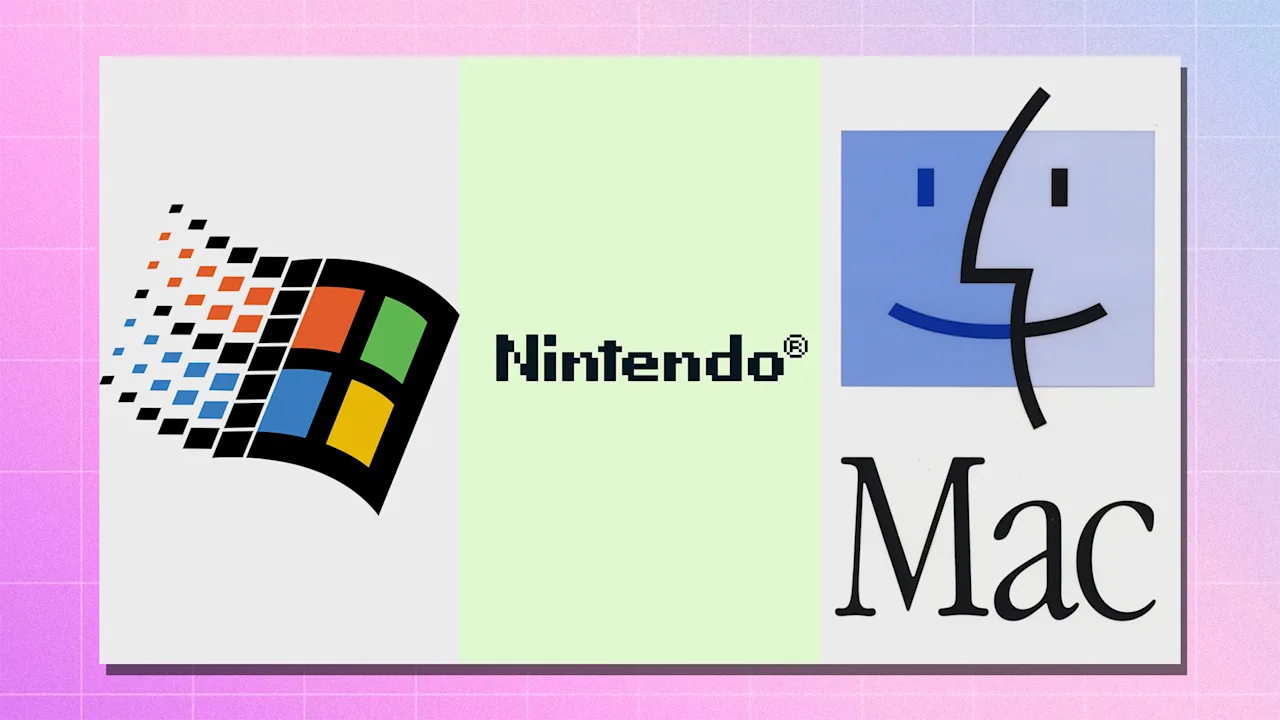These are the 10 most memorable sound effects in the history of tech

For understandable reasons, most technology coverage tends to focus more on the physical or visual elements of new devices than their audio signature. It’s much easier to show and tell audiences how great a new screen is or how thin a new phone is than to explain the experience they’ll get from its sound effects.
But that doesn’t mean audio can’t be just as memorable, or as important to the companies that design it. Here are 10 of the most impactful, unforgettable sounds and effects from the past few decades in tech.
Mac startup chime
Frustrated by the previous tri-tone sound that accompanied the frequent Mac crashes of the ’90s, Apple sound designer Jim Reekes took it upon himself to create an iconic chime that remains an indelible part of the Mac experience—although we don’t need to reboot our computers so often these days. The current chime, introduced in 1998 on the iMac G3, was inspired by The Beatles’ “A Day in the Life” and makes for a much more calming, optimistic way to start your work.
It says a lot that of all the issues introduced alongside the controversial 2016 MacBook Pro lineup—including the unpopular USB-C-only port setup and the fragile “butterfly” keyboard—the lack of a startup chime managed to cause a similar level of uproar online among Mac diehards. The chime was restored in 2020 and has remained on Mac computers ever since.
Windows 95 startup sound
While the Mac startup chime came from a single employee’s personal inspiration, Microsoft’s equally iconic counterpart came about through sheer corporate willpower. To create a sound that would define the Windows 95 experience, the company’s marketing agency decided to leverage the talents of legendary record producer and ambient music pioneer Brian Eno.
“The thing from the agency said, ‘We want a piece of music that is inspiring, universal, blah-blah, da-da-da, optimistic, futuristic, sentimental, emotional,’ this whole list of adjectives,” Eno told SFGate in 1996. “And then at the bottom it said ‘and it must be 3 1/4 seconds long.’”
Eno may have failed the brief, because the resulting sound is actually more like six seconds. But it does a lot with its running time; a lush, rising arpeggio gives way to fading crystalline notes, managing to sound at once warm and futuristic. It was the perfect match for Windows 95, which drove an explosion in the accessibility of personal computers.
Dial-up modem handshake
The other inescapable sound associated with PCs of that era could not have been more different to Eno’s delicate precision. The screeching handshake as a dial-up modem connected to an internet service provider was not exactly a single sound effect, but the raw, analog result of machines talking to each other.
Although it sounded like random static, it reflected a precise negotiation on the part of the modem. Each bleep and hiss served a purpose, from the tones that disabled voice-line processing to the test chirps that probed for speed and stability.
No one would ever have described the eventual noise as pleasant, and it was frustrating to have to sit through it every time. But there is a certain beauty in how such a chaotic signature came to symbolize getting online in the early days of the web. Logging onto the internet each evening felt like tapping into a fragile new frontier held together with string. Of course, that wasn’t too far from the truth.
DROOOID
This was the mechanical sound that first signaled to American consumers that Apple might have some serious competition. While Android had been around for a couple of years, it was still a Wild West of janky hardware and convoluted software from a variety of providers, with no one quite managing to break through. But by pairing the aggressive, sci-fi Droid branding—licensed from Star Wars owner Lucasfilm—with some impressive keyboard-equipped hardware from Motorola, Verizon managed to define an identity for Android that stood in direct opposition to Apple.
The “Droooid” audio tag not only appeared at the end of TV commercials, it was the notification sound on Verizon phones at a time when people didn’t live on Do not Disturb (DND). Sat next to a Verizon customer on the subway who just got an alert? “Droooid.”
Looking back at “Droooid” today, it comes off as deeply silly. The techy, self-consciously masculine branding swiftly descended into parody, with some truly ridiculous products like the Droid Xyboard tablet. But its impact on the mobile ecosystem can’t be underestimated. It was so successful as a branding exercise, in fact, that for years many people would refer to any Android phone as “a Droid” regardless of whether it came from Verizon or Motorola.
Nintendo Game Boy startup
The simple, two-note Game Boy bling was an exercise in delayed gratification. Flip the switch with a game cartridge inserted and you’d see the monochrome Nintendo logo slowly descend from the top of the screen; if everything was in order, you’d hear the satisfying da-ding.
What made it so effective was that often enough, everything would not be in order. Often because of dirty cartridge contacts, one way or another most original Game Boy owners would eventually run into what happened when the console couldn’t communicate properly with the game: A garbled, pixelated Nintendo logo would be shown instead, and the sound would either be incomplete or not play at all.
The solution? You guessed it—take the cartridge out and blow on it. Nintendo has never officially endorsed this technique, but the proof of its effectiveness was right there in the restoration of the chime. The anticipation of hearing it play as the correctly displayed Nintendo logo moved down the screen made the struggle worth it.
Sony PlayStation startup
The original PlayStation went for something functionally similar to the Game Boy, but with a much more maximalist approach. The booming, cinematic drone that accompanied the gold Sony Computer Entertainment logo on a white background would, if a readable game CD was inserted, give way to a black screen that featured the iconic four-color PS logo accompanied by a cascade of shimmering chimes.
The startup sequence was created by Sony sound designer Takafumi Fujisawa. “My aim is to lead the sense of security when the console is turned on to the excitement after,” he said in a 2019 interview. “I kept thinking from the start that I wanted the sound image to be something exciting, like that feeling when you walk into a cinema. I really wanted to communicate and reinforce that something fun is going to happen.”
Sony brought back the PS1 boot animation and sound as part of a nostalgic 30th-anniversary theme update for the PS5, but unfortunately it was a limited-time addition. While subsequent PlayStation startup sounds have been similarly classy—in particular the PS3’s orchestra tune-up—it’s hard to beat the original.
THX Deep Note
Audio company THX is known for its quality assurance rather than any particular products of its own. But if you ever watched a movie in a THX-certified theater, you won’t have forgotten the Deep Note, a swelling synthesized crescendo that serves two purposes: demonstrating the sound system’s capabilities, and convincing you that you’re about to be blown away by some serious audio.
Starting from a low rumble in narrow frequencies and expanding to pitches that span three octaves, the THX Deep Note is an ode to the concept of dynamic range. THX has bounced around various owners since being spun off from Lucasfilm, and the Deep Note is not as ubiquitous a fixture of the cinema experience. But there might never have been a more powerful sound in technology.
Cherry MX Blue switch
If you’re not into mechanical keyboards but you think you know what mechanical keyboards sound like, you’re probably thinking of the Cherry MX Blue switch. Cherry’s pioneering range of switch designs includes several with quieter feedback, but the Blue is best known for its ultra-tactile, intentionally clicky response.
The sound is not necessarily the point of the design, which most appeals to writers for its deep travel and satisfyingly physical click. But the experience of typing on a keyboard with Blue switches is multisensory and, for many, addictive to the point of no return. Between the way you feel the key travel past the bump of the actuation point and the sound you get when the switch is activated in response, you really know when you’ve successfully typed each and every letter.
Is this a problem that non-converts ever think about? Not really. But in the same way that watch enthusiasts obsess over legibility or font experts demand readability, the sound of a Cherry MX Blue switch is a testament to crunchy, inimitable typeability.
Xbox 360 ‘blades’
Microsoft has never been able to make its mind up about Xbox software design, and no iteration was more beloved than the “Blades” interface that launched with the Xbox 360 in 2005. Though simple by today’s standards, and a little visually gauche even at the time, the key feature was the ability to swipe between pages—games, hardware, media and so on—with the bumper buttons on the controller.
The interface was fast and responsive, but it was the audio that elevated it into such a satisfying experience. Switching between each Blade was accompanied by a crisp, directional swooshing noise, giving you a sense of place in the UI and encouraging you to explore more.
The Xbox 360’s Blades were designed in an age of physical media, where access to Netflix involved pressing the eject button on the console itself. It’s no wonder that Microsoft eventually decided that the UI would require a total overhaul. But that doesn’t mean Xbox fans to this day don’t miss the precise, razor-sharp swoosh that came when they swiped over to play a video from a USB stick.
iPod Click Wheel clicks
Apple knew it had a hit on its hand with the iPod, and a big part of it was the wheel-driven interface that made scrolling through long lists of music effortless. But when the company moved to touch-sensitive capacitive scrolling wheels, it needed something to replace the sense of tactile feedback that came from the older mechanical wheels’ physical detents.
With the Click Wheel, introduced with the iPod mini, Apple hit on an ingenious solution: sound. Whether played through headphones or a tiny onboard piezoelectric speaker, the subtle ticks you could hear created the illusion of a physical bump behind every item in the list-based interface.
Between the synthetic ticks and the way the Click Wheel incorporated physical buttons for controls like skipping and play/pause, Apple designed a more convincingly tactile experience while actually reducing the moving parts.
What's Your Reaction?
 Like
0
Like
0
 Dislike
0
Dislike
0
 Love
0
Love
0
 Funny
0
Funny
0
 Angry
0
Angry
0
 Sad
0
Sad
0
 Wow
0
Wow
0































































































